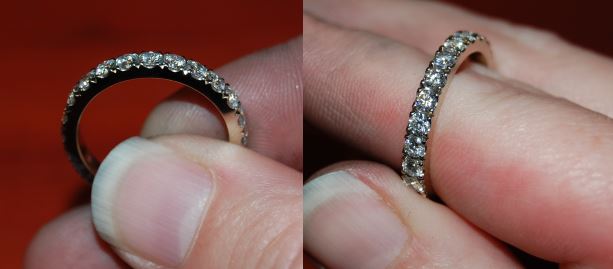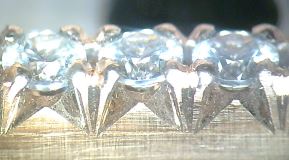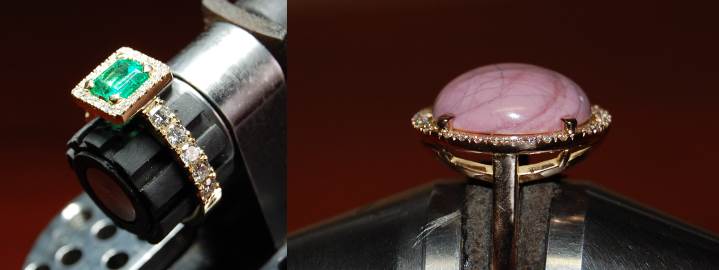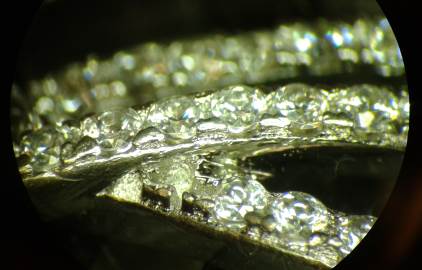Castle setting
Castle setting is a bead setting technique similar to pavé, but used for stones that have nearly the same diameter as the material they are set into. The sides of the stones are visible and the metal there is finished into a lace-like pattern. This pattern looks like the battlements of a fortified castle.
Although it can be used to set stones that are wider than the metal, this should be avoided to protect the thin sides of the gems. Ideally the stone diameter should be 0.1 to 0.2 mm less than the width of the metal. A very beautiful way to use castle setting is in eternity rings. These are set with stones along their complete circumference, symbolizing eternal love.

An eternity ring with castle set stones
The classic side finish uses alternating arches and notches. There is also another side finish using only notches. This is called fishtail or french cut setting.

'Fishtail' or 'french cut' setting
This style of setting also goes very well as an entourage around a center stone. Castle setting should only be used with stones up to 3.5mm in diameter. With larger ones, a prong setting will generally be more appropriate because they require more metal to be held securely.

Castle setting used as entourage around an emerald (left) and a rhodonite cabochon (right)
When castle setting is executed uncarefully, the appearance of castle setting can be very disappointing. In the next picture, we see castle setting executed to a low standard. The stones are set high above the metal with only minimal material holding them in place. Many are set askew, increasing the risk they fall out and ruining their brilliance. Note how the sides of the metal have barely been finished at all, so the ‘lace’ pattern is not apparent.

Badly executed castle setting
